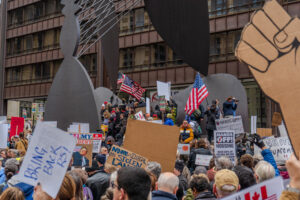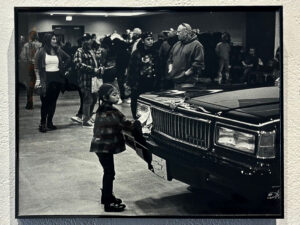With millions of federal stimulus dollars flooding Illinois’ transportation system, a sturdier infrastructure may be within reach – but along with it will come years of headaches and service interruptions as construction crews get to work.
Starting this spring and for the better part of the next decade, Metra riders will find themselves in the midst of a “major project” as the commuter rail takes on the massive task of replacing 22 North Side overpasses. The bridges, many of which are more than a century old, are “beyond economic repair,” said Metra spokesman Michael Gillis.
The first phase of the project, which will cost an estimated $100 million, will last four years and involve 11 bridges along Metra’s Union Pacific North Line from Addison Street to Balmoral Avenue. Eleven more bridges will be replaced in a second phase after the first is complete, Gillis said.
Some believe the work is long overdue. Last November, an engineering firm hired by the Regional Transportation Authority, which funds Metra, reported that 70 percent of Metra’s bridges were in need of repair. Those findings were preliminary, said RTA spokeswoman Diane Palmer, and a final study is expected out this summer.
Metra has not yet said how the bridge work will affect commuters, but Gillis said riders should brace themselves for delays.
“We will be operating the route on a single track through the construction area,” he said. “That will have an impact on service.”
Plans for the project, one-third of which is to be funded by federal stimulus money, also include a new station at the North Line’s run-down Ravenswood stop. The new station will lie on the north side of Lawrence Avenue and will accommodate eight train cars, instead of six.
Amtrak, too, is facing a long list of construction projects that will tap another $55 million in stimulus money in Illinois alone. Jobs include an expansion of maintenance buildings, mechanical repairs and upgrades at Chicago’s Union Station rail hub.
While much of that work will be out of view of passengers, its impacts will undoubtedly be felt, said Amtrak spokesman Marc Magliari.
“It’s inconvenient and it reduces our flexibility, but we will do everything we can to make this transparent to everyone,” Magliari said. “There’s a lot going on in the next couple of years. That’s what it’s all about.”
State Rep. Elaine Nekritz (D-Northbrook), chair of the Illinois House Rail Industry Committee, estimated that between the federal stimulus and the state’s own capital money there is $2 billion worth of rail construction in the works in Illinois.
That includes more than $1 billion in funding for high-speed rail lines connecting Chicago to St. Louis and other Midwestern cities, a huge – albeit, smaller than hoped – project announced last month by President Barack Obama.
“There’s a lot of activity,” Nekritz said.
Spending stimulus money on rail construction is a wise move right now, said Illinois Public Interest Research Group spokesman Brian Imus, because mass transit projects generate more jobs than building highways does. That’s because with transit construction, less money is required for land purchases and other non-job related expenses.
And the completed projects help people more in the long run, Imus said.
“In tough economic times, not only should we be making new jobs, but we should be making it easier for people to get where they need to go,” he said.
In the meantime, commuters will just have to excuse the dust.
“It’s an inconvenience, but in the end it’ll make service more reliable,” Imus said. “And that’s what going to make it so more people want to use transit, rather than getting stuck in traffic.”
sarah.ostman@loop.colum.edu






Be First to Comment